Upper Control Arm Replacement RWD
Removal Procedure
Caution: Floor jack must remain under the lower control arm during
removal and installation to retain the lower control arm in position. Failure
to do so could result in personal injury.
- Raise the front of the vehicle.
| • | Support the lower control arm with floor stands. |
| • | Because the weight of the vehicle is used to relieve the spring
tension on the upper control arm, position the floor stands between the spring
seats and the ball joints of the lower control arms in order to maintain
maximum leverage. |
- Remove the tire and wheel assembly. Refer to
Wheel Removal
in Tires and Wheels.
Important: Support the rotor assembly in order to prevent the rotor weight from
damaging the brake hose.
- Remove the upper ball joint from the steering knuckle. Refer to
Upper Control Arm Ball Joint Replacement
.
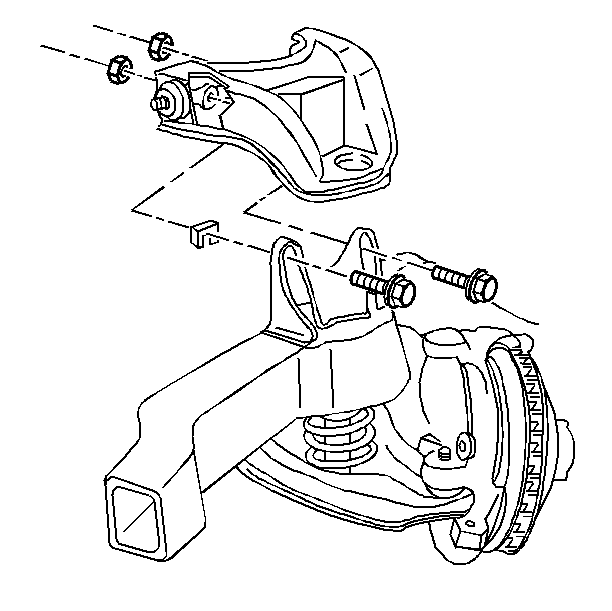
- Remove the attaching bolts and nuts from the
upper control arm. Note the location of any shims.
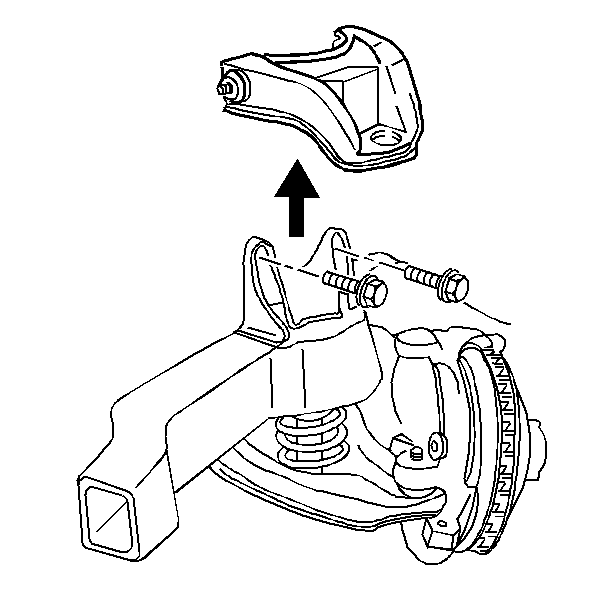
- Remove the upper control arm.
- Inspect all of the parts for wear and damage.
Installation Procedure
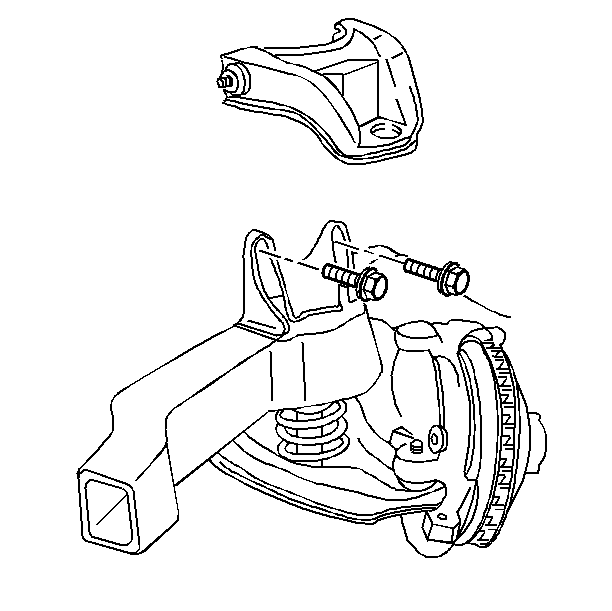
- Install the bolts to the frame.
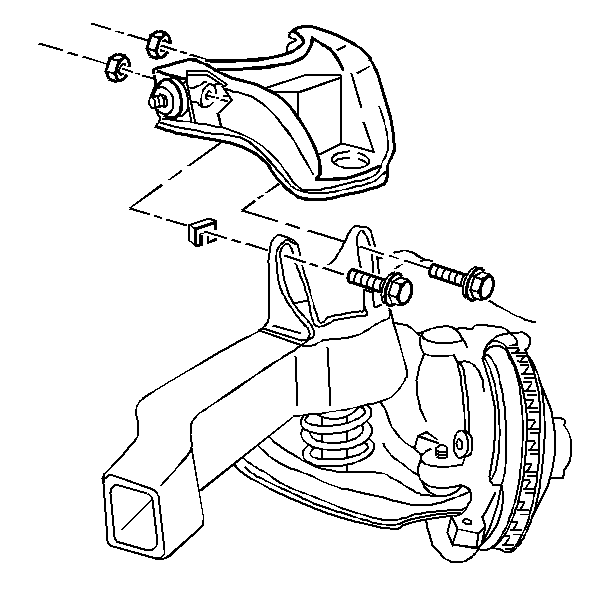
Important: The left upper control arm shaft depression must face inboard.
- Install the upper control arm to the bolts.
- Install the shims to the original position.
Notice: Use the correct fastener in the correct location. Replacement fasteners
must be the correct part number for that application. Fasteners requiring
replacement or fasteners requiring the use of thread locking compound or sealant
are identified in the service procedure. Do not use paints, lubricants, or
corrosion inhibitors on fasteners or fastener joint surfaces unless specified.
These coatings affect fastener torque and joint clamping force and may damage
the fastener. Use the correct tightening sequence and specifications when
installing fasteners in order to avoid damage to parts and systems.
- Install the nuts.
Tighten
| • | Tighten the nuts with the front suspension loaded. |
| • | Tighten the nuts to 75 N·m (55 lb ft). |
- Install the upper ball joint to the steering knuckle. Refer to
Upper Control Arm Ball Joint Replacement
.
- Remove the temporary support from the hub assembly.
- Install the tire and wheel assembly. Refer to
Wheel Installation
in Tires and Wheels.
- Check the front wheel alignment. Refer to
Wheel Alignment Specifications
in Wheel
Alignment.
Upper Control Arm Replacement S4WD
Removal Procedure
Tools Required
| • | J 33793 Control
Arm Bushing Service Set |
- Raise the vehicle. Support the vehicle with safety stands.
- Remove the tire and the wheel. Refer to
Wheel Removal
in Tires and Wheels.
- Support the knuckle.
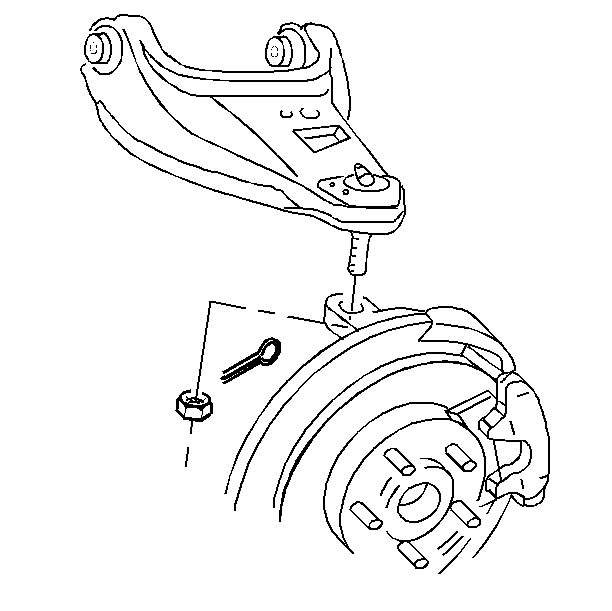
- Remove the cotter pin.
- Remove the nut.
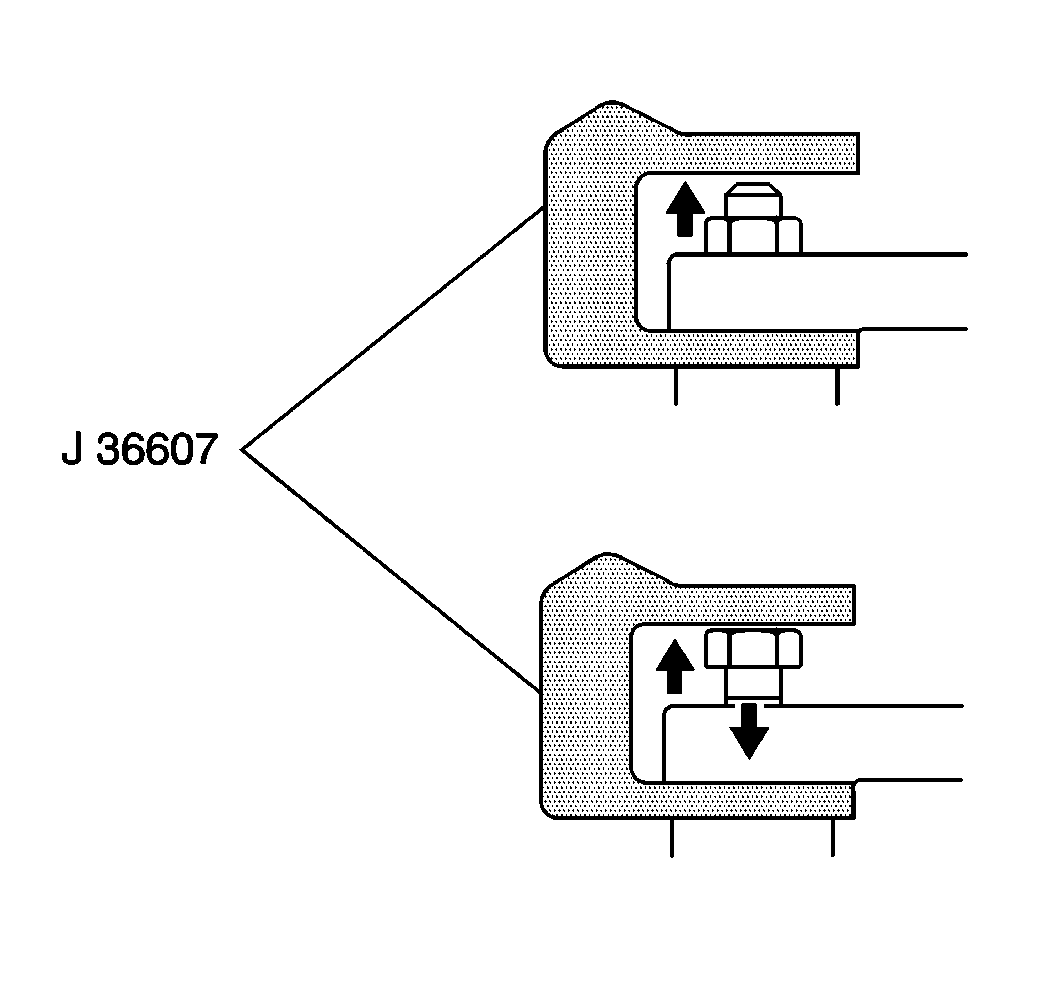
- Position the J 36607
.
- Back the nut off until the upper ball joint separates.

- Remove the upper control arm from the knuckle.
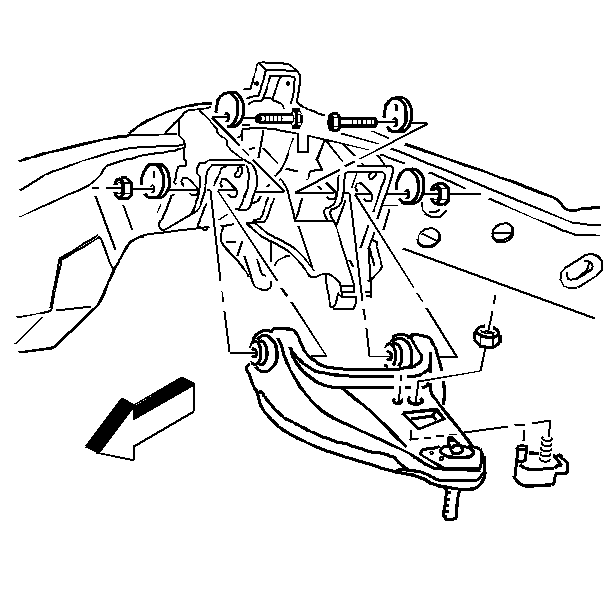
- Remove the following parts:
| 9.5. | The upper control arm |
| 9.7. | The bumper from the upper control arm |
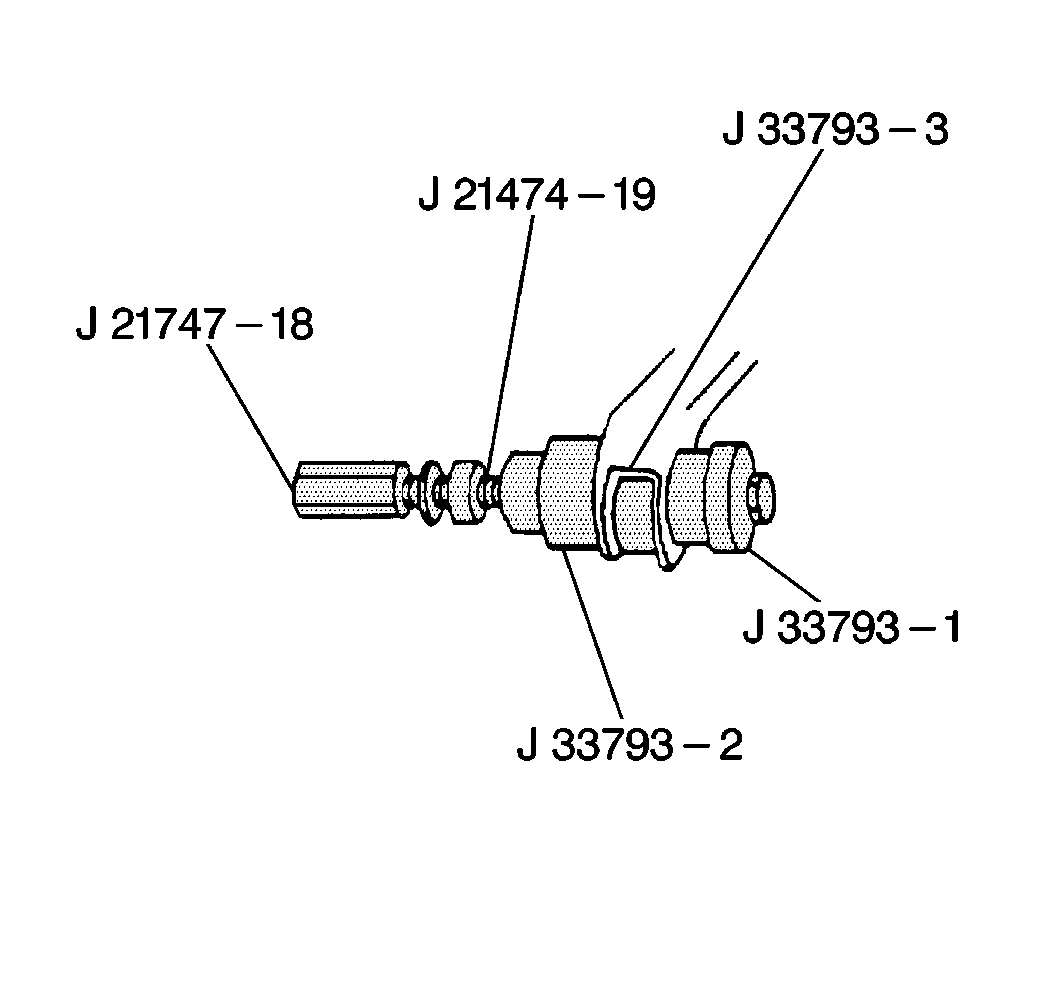
- Remove the bushings. Use
the tools shown.
Installation Procedure
Tools Required
| • | J 33793 Control
Arm Bushing Service Set |
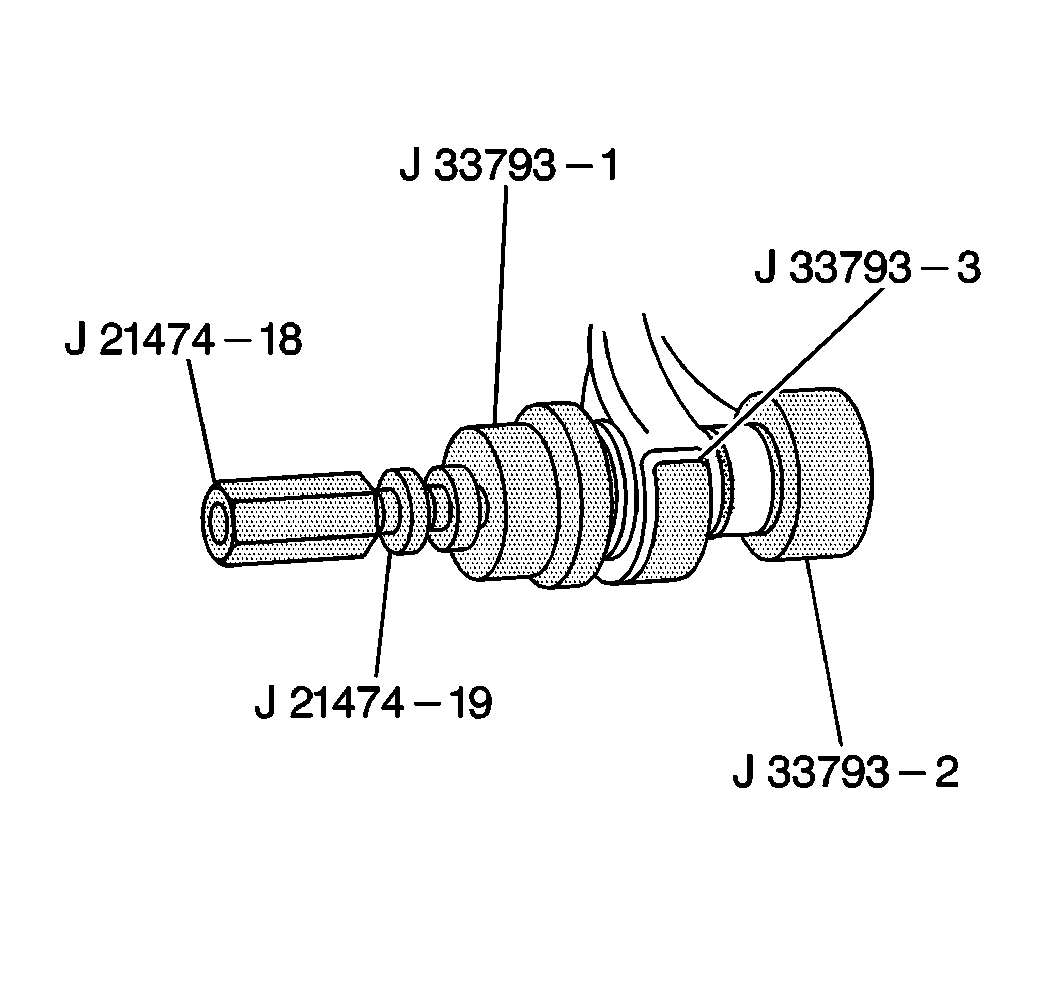
- Install the bushings to
the upper control arm. Use the tools shown.
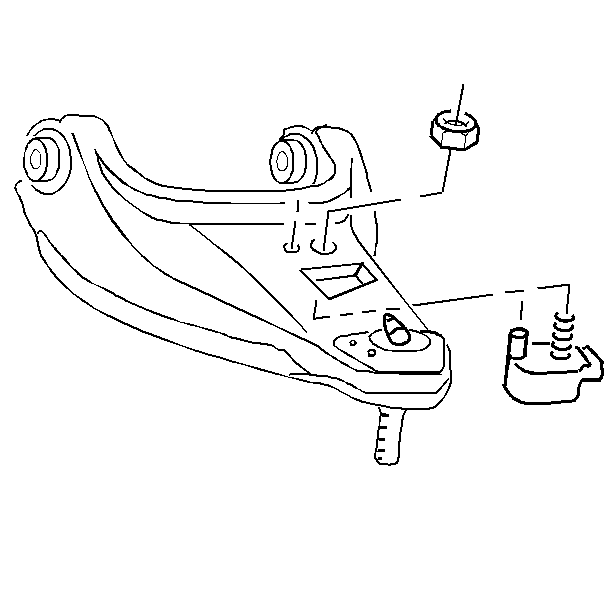
- Install the bumper to the upper control arm.
Notice: Use the correct fastener in the correct location. Replacement fasteners
must be the correct part number for that application. Fasteners requiring
replacement or fasteners requiring the use of thread locking compound or sealant
are identified in the service procedure. Do not use paints, lubricants, or
corrosion inhibitors on fasteners or fastener joint surfaces unless specified.
These coatings affect fastener torque and joint clamping force and may damage
the fastener. Use the correct tightening sequence and specifications when
installing fasteners in order to avoid damage to parts and systems.
- Install the nut
to the bumper.
Tighten
Tighten the nut to 27 N·m (20 lb ft).
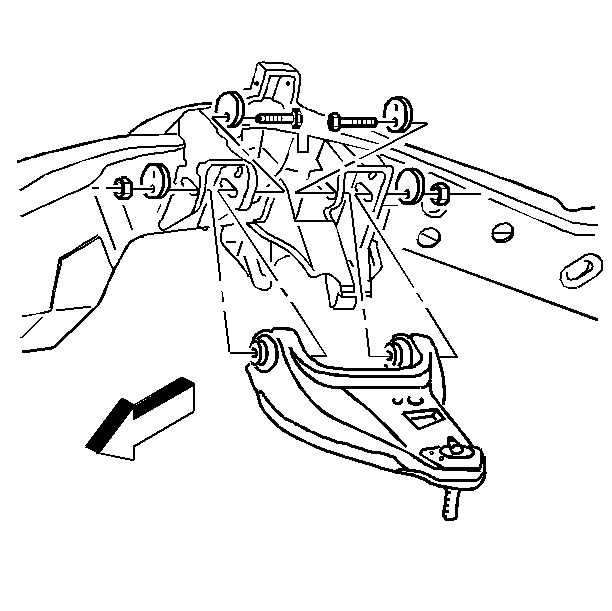
- Install the upper control arm to the frame.
- Install the cams to the bolts.
Important: The bolt heads must be opposed inside the bracket.
- Install the bolts to the upper control arm.
- Install the cams.
Notice: Use the correct fastener in the correct location. Replacement fasteners
must be the correct part number for that application. Fasteners requiring
replacement or fasteners requiring the use of thread locking compound or sealant
are identified in the service procedure. Do not use paints, lubricants, or
corrosion inhibitors on fasteners or fastener joint surfaces unless specified.
These coatings affect fastener torque and joint clamping force and may damage
the fastener. Use the correct tightening sequence and specifications when
installing fasteners in order to avoid damage to parts and systems.
- Install the nuts.
Tighten
| • | Tighten the nuts with the front suspension loaded. |
| • | Tighten the front nut to 115 N·m (85 lb ft). |
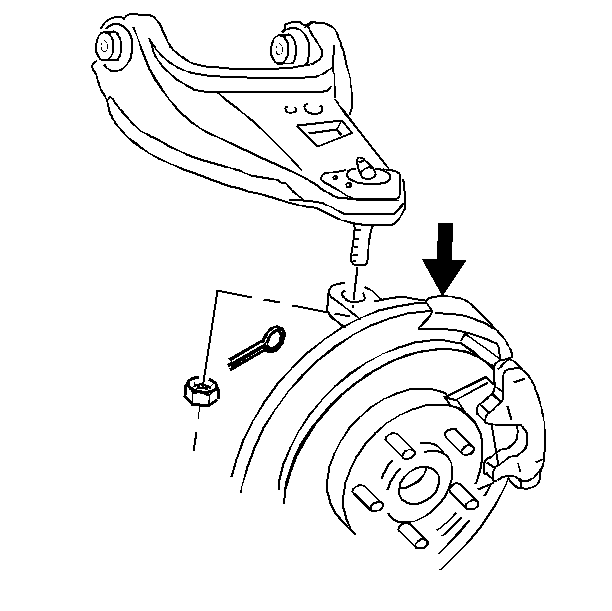
- Install the upper ball joint stud to the knuckle.
Notice: Use the correct fastener in the correct location. Replacement fasteners
must be the correct part number for that application. Fasteners requiring
replacement or fasteners requiring the use of thread locking compound or sealant
are identified in the service procedure. Do not use paints, lubricants, or
corrosion inhibitors on fasteners or fastener joint surfaces unless specified.
These coatings affect fastener torque and joint clamping force and may damage
the fastener. Use the correct tightening sequence and specifications when
installing fasteners in order to avoid damage to parts and systems.
- Install the nut
to the upper ball joint stud.
Tighten
| • | Tighten the nut in order to align the cotter pin. Do not tighten
the nut more than 1/6 turn. |
| • | Tighten the nut to 83 N·m (61 lb ft). |
- Install a new cotter pin.
| • | Bend the pin ends against the nut flats. |
| • | Remove the support from the knuckle. |
- Install the tire and the wheel. Refer to
Wheel Installation
in Tires and Wheels.
- Lower the vehicle.













